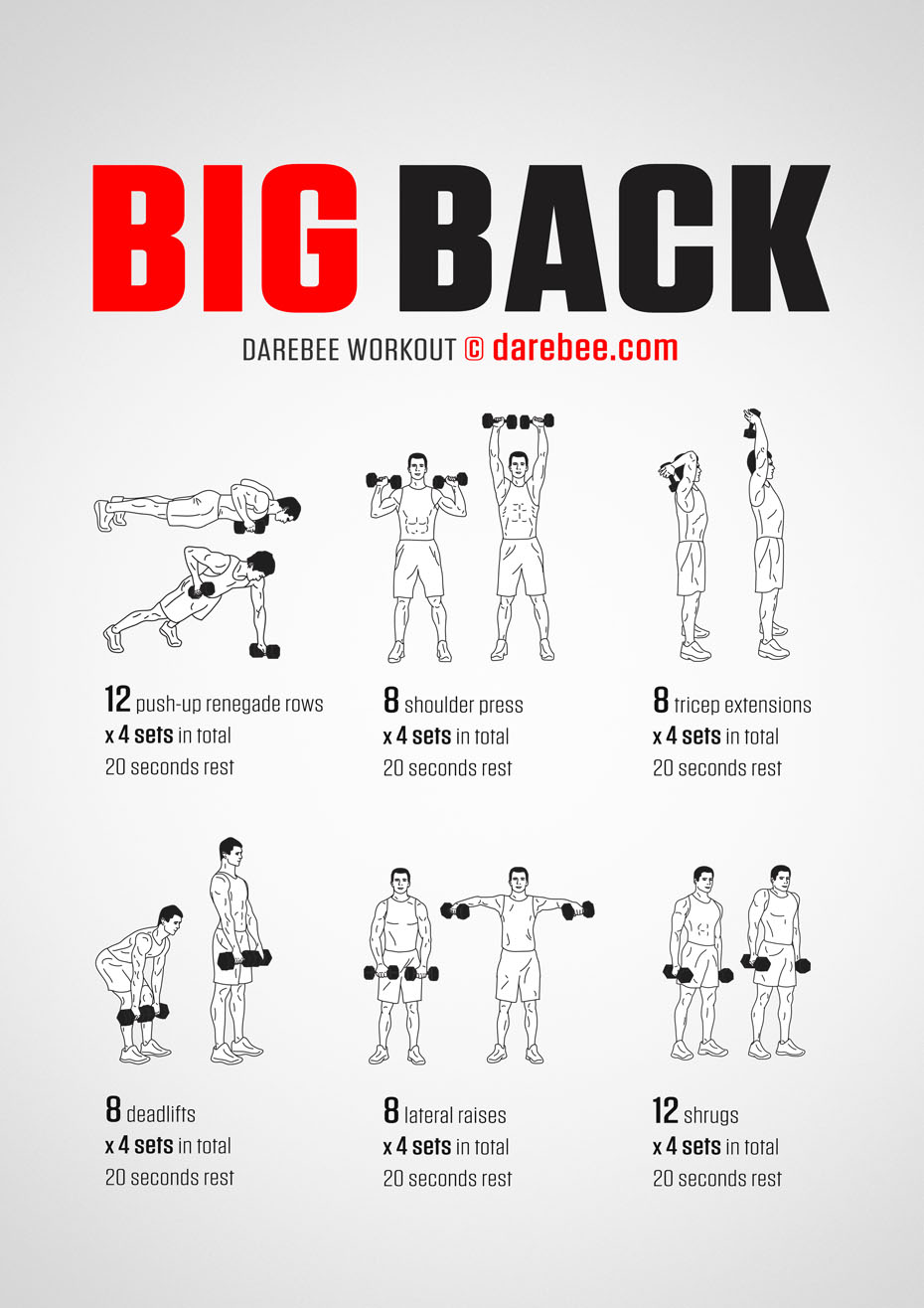Essential Guide to Rücken Training with Dumbbells: Improve Your Workout in 2025
Rückentraining, or back training, is a vital component of any fitness regime, especially for those engaging in strength training with dumbbells. This guide delves into the various exercises and techniques you can implement to strengthen your back muscles effectively, empowering you to enhance your overall physical health. Strengthening the back improves posture, reduces the risk of back pain, and contributes to better athletic performance. With the growing popularity of at-home workouts, our guide emphasizes practical exercises for every fitness level, from beginners to advanced athletes.
Throughout this article, we will explore the best practices for dumbbell back training, focusing on isolation exercises, compound movements, and recovery strategies. You will discover about effective workout techniques that promote muscle growth and structural integrity, ensuring a healthy back for daily activities and sports. Our key takeaways include the major benefits of back training, essential exercises, and tips for success. Let’s embark on this journey toward a stronger back and a healthier future.

Essential Techniques for Effective Rücken Training with Dumbbells
Building on the contextual foundation of Rücken training provides us with the tools to delve into effective techniques that are pivotal for success.
Understanding Basic Rücken Training Terminology
Familiarizing yourself with the terminology related to Rückentraining mit Kurzhanteln is critical for maximizing your workout effectiveness. Terms such as isolation exercises, compound movements, and rep ranges are foundational in structuring your sessions. Isolation exercises target specific muscles, while compound movements engage multiple muscle groups for enhanced strength and endurance. Understanding these concepts helps you tailor your training plan and set achievable goals.
Choosing the Right Dumbbells for Your Needs
The choice of Kurzhanteln plays a significant role in your training success. Adjustable dumbbells offer versatility, allowing you to increase in weight as you progress. Opt for lighter weights to start, particularly if you’re focusing on mastering form before increasing intensity. Selecting the appropriate dumbbell also enhances safety and effectiveness during your workouts.
Key Safety Guidelines for Rücken Training
To avoid injuries while engaging in Rückentraining, adhering to safety protocols is essential. Always warm up before jumping into exercises to prepare your muscles and joints. Proper form is crucial—maintaining neutral spine alignment and avoiding excessive twisting can reduce strain on your back. Consider consulting a coach for guidance on technique if you’re new to strength training.
Effective Exercises for Rücken Musculature Development
When focusing on Rückenmuskulatur aufbauen, it’s essential to include a variety of exercises. Movements like bent-over rows and deadlifts target multiple muscles in the back and core, promoting functional strength. Aim for a balanced routine that includes horizontal pulling (like rows) and vertical pulling (like pull-ups) to develop your muscles comprehensively.
Integrating Flexibility and Recovery in Your Routine
Incorporating flexibility and recovery into your Krafttraining Rücken sessions is vital for long-term success. Techniques such as stretching and foam rolling help alleviate muscle soreness and improve mobility. Schedule rest days in your training plan to allow your muscles to rebuild and grow stronger.

Building a Comprehensive Kurzhantel Rückentraining Plan
With a solid understanding of essential techniques, let’s discuss how to create a comprehensive plan for your Rückentraining zu Hause.
Developing a Customized Training Schedule
Your Kurzhantel Rückentraining Plan should consider your fitness level, goals, and available time. An ideal training schedule balances workout days and rest, typically recommending 2-3 days of back training per week. For beginners, full-body workouts that can include back exercises may provide a solid start.
Set Clear Goals for Your Rücken Training
Establishing clear and measurable goals is integral. Whether your aim is to build muscle mass, prevent back pain, or improve athletic performance, specific goals will guide your training efforts. Maintain a journal to track your progress and motivate your commitment to your fitness journey.
Using Online Resources for Guidance
Leverage online Rückentraining guides for additional tips and exercise tutorials. Videos can demonstrate proper form and help you discover new techniques to keep your routine fresh and engaging. Engaging with virtual fitness communities can also provide support and accountability during your training.
Incorporating Feedback and Adjustments
Adaptations based on your progress are key for ongoing improvement. Regularly evaluate your performance and progress toward your goals. If certain exercises are ineffective or if you’re experiencing pain, adjustments may be necessary. Consult a fitness professional for tailored advice.
Ensuring Balance: Integrating Other Muscle Groups
Incorporating a full-body workout routine ensures balanced muscle development, supporting overall fitness. Combine your back exercises with workouts targeting the chest, legs, and core. A strong core, for example, aids in back stabilization during movements, preventing injury.
Practical Exercises to Strengthen the Rücken Musculature
With a solid plan in place, it is time to explore practical exercises that enrich your Rückentraining effektiv.
Top 5 Dumbbell Exercises for Back Strengthening
Incorporating targeted exercises into your regimen yields significant results. Utilize these five essential dumbbell exercises to build a stronger back:
- 1. Bent-over Dumbbell Row: A fundamental exercise targeting the lats and rhomboids.
- 2. Dumbbell Deadlifts: Strengthens the entire posterior chain while promoting hip hinge mechanics.
- 3. One-arm Dumbbell Row: Allows for unilateral strength development, identifying and rectifying muscle imbalances.
- 4. Renegade Rows: Engages core stability and promotes upper body strength.
- 5. Dumbbell Pullovers: Great for expanding chest and enhancing lat engagement.
Best Practices for Execution of Each Exercise
To maximize the benefits of each exercise, focus on proper form and controlled movements. Aim for a steady tempo, ensuring your muscles are under tension throughout the rep. Regularly check in with your form, particularly as you increase weights.
Exploring Variations for Advanced Training
If you’re comfortable with the basic exercises, consider incorporating variations to further challenge your back muscles. These could include single-leg deadlifts or alternating rows, which introduce balance and stability challenges.
How to Maintain Motivation and Consistency
Creating a training routine that you enjoy is crucial. Varying your exercises and workout environment can prevent boredom and keep you motivated. Consider partnering with a workout buddy or combining your training with enjoyable fitness classes to keep your spirits high.
Monitoring Your Progress and Adjusting as Needed
Consistency is key in fitness, so regularly monitor your progress. Consider tracking not just your weights but your form and how you feel during and after workouts. Modifying your routine in response to your body’s signals leads to smarter training outcomes.
Q&A Section: Common Questions About Rücken Training with Dumbbells
What are some common mistakes in dumbbell back training?
Common mistakes include using improper form, lifting weights that are too heavy, and neglecting core engagement. Always prioritize quality over quantity to maximize effectiveness and minimize injury risk.
How often should I do Rücken training?
Aim for 2-3 sessions per week that focus on back training, ensuring you include rest days between to allow for recovery.
Can Rückentraining help with back pain?
Yes, targeted Rückentraining can alleviate back pain by strengthening muscles, enhancing flexibility, and improving posture. Always consult a healthcare professional if you have existing conditions before starting a new routine.
Are there specific exercises for women on Rückentraining?
Many exercises can benefit women, with a focus on back strengthening and injury prevention. The principles of strength remain consistent, but the loads and repetitions can be tailored to fit personal goals.
How can I ensure safe progression in my Rückentraining?
To ensure safe progression, regularly assess your ability to handle weights, focus on form, and gradually increase your load under proper supervision or guidance.
Incorporating these methods and practices into your Rückentraining mit Kurzhanteln will undoubtedly lead to a stronger, healthier back. Let’s commit to strengthening our backs for enhanced fitness, posture, and life quality!
